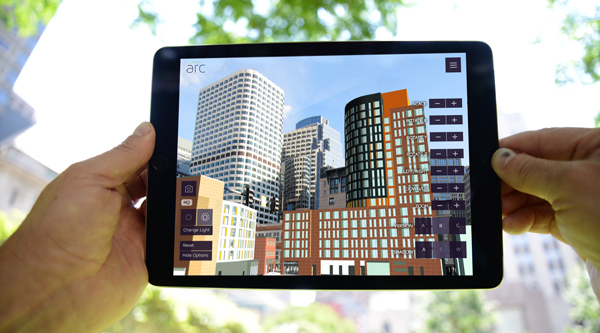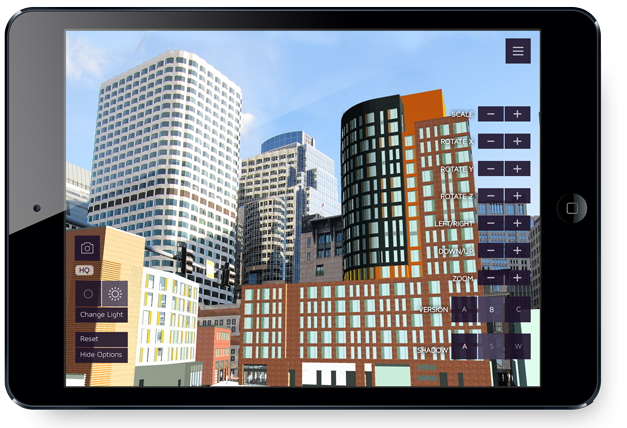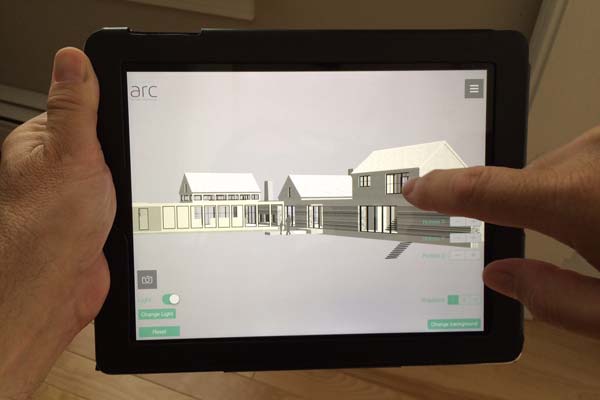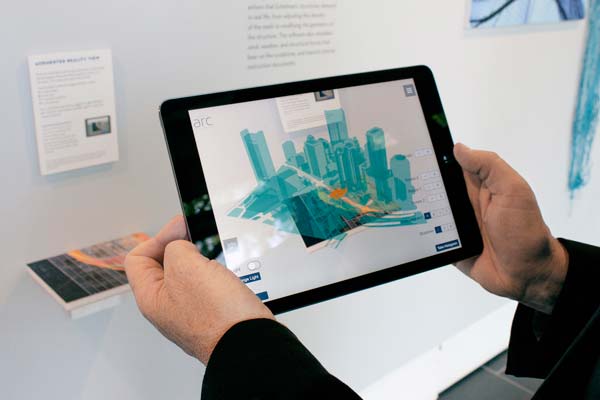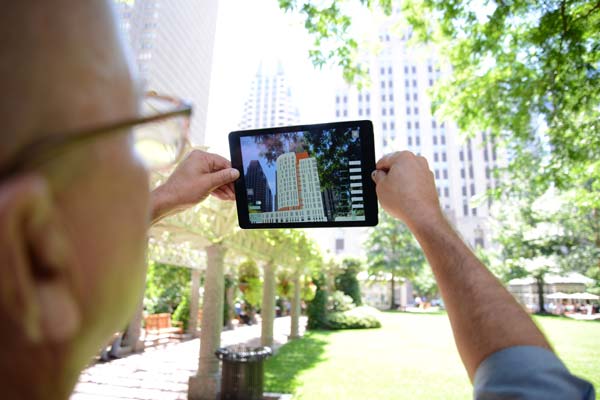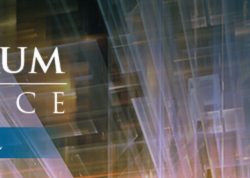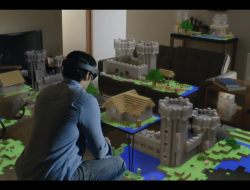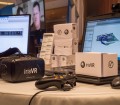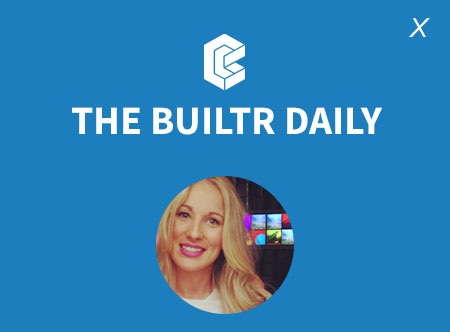Building Conversation is one of those companies we’re going to be seeing a lot of in the coming years. They are bringing augmented reality solutions to the AEC industry based around one concept; conversation. They want to increase the communication in the AEC industry, and also save significant time and money in the process. How did they come up with this idea? Where did it all begin? BUILTR interviewed founders George Thrush and Terrence Masson to find out.
“We saw areas of architectural communication where there was a real lack of communication going on, especially early on in the public process when people are called upon to evaluate big projects in cities.” said George Thrush. Thrush had been feeling this way for quite some time as he worked for the city and private developers as an architect. “I was stunned at how ill-informed everybody was, even with all of the drawings and everything. Several years ago I started to dabble in this, but I completely lacked the technical know-how to even understand what mountain I was trying to climb.”
“We got so much follow-up interest,” said Masson, “Architects [were] saying ‘Please, please do something with this. Don’t just tease us”.
Fast forward to three years ago; George Thrush and Terrence Masson started talking. Terrence had built a career over the last 25 years solving impossible creative/technical/business problems and was teaching a course at Northeastern in interactive media. Talking to him really started the project, because he knew how to do what Thrush had been talking about (the technical and business side of it; of bringing communication to architecture). Terrence put together a senior capstone class and together they developed a prototype for what would eventually become Building Conversations. They worked with early adopters, beta clients Sasaki and Hutker; and the product was a big success. It won multiple awards and garnered the attention of the press, not to mention their test clients loved it. “We got so much follow-up interest,” said Masson, “Architects [were] saying ‘Please, please do something with this. Don’t just tease us”.
After the success of the prototype, Masson took about a year to research potential competitors and to file a provisional patent. They went through the IDEA program at Northeastern University, a venture accelerator to strengthen their business plan and proposition. Masson threw away the prototype and wrote an entirely new RFP based on what he and Thrush had learned. They then applied to Mass Challenge, and were accepted as one of 128 companies out of the 2,200 that had applied. In order to code the new RFP, the duo hired a remote development team in Eastern Europe. From there they focused on growing beta customers from the original one or two to around 24.
“Architectural modeling is very advanced already,” Thrush clarified, “but what they lack is context.”
However, as time progressed, the problem Thrush had initially set out to solve changed somewhat, or, in his words “evolved”. As Thrush explains it “it’s not that the public review process isn’t still a huge piece of low-hanging fruit… but what Terrence is talking about, all these clients are drawn not only to that [the public review process] but to communication with their regular architecture clients. Anyone who has been part of building a building, whether it be a house or an office, knows the frustration of having to wait for the final product to be finished to see if it matches their vision. Blueprints, static renderings and models are one thing, but they fall very short of what the actual finished product will actually look like on-site and in context. And this gap in communication between the architect and their clients is what Building Conversation is trying to bridge. The name of the company is an apt one – they are literally building conversations about buildings. With Building Conversation’s software, clients can experience what it would be like to be in their finished house; they will see the views from their windows and get an idea of how they will experience the space.
What’s more, it has the potential to help other industries as well, like construction. Thrush described it this way: Instead of walking with a pencil and paper or taking notes, you walk through looking at what the project is supposed to look like ultimately, and you see that against what it is. Immediately you can take video or snapshots and say ‘Whoops. See, that things are wrong. Let’s fix it before it’s expensive to fix it. We’ll fix it now, not in seven months.’ Enormous savings.” Thrush also believes the software could hugely benefit the real estate market as well; “You and I walk out on an undeveloped parcel of land in New Hampshire, and we’re proposing 40 units of housing. I can sell you a unit before anything is built because we can walk into it, see what the view are. It’s just great.”
A necessity for this to work (and for Building Conversation to outlast their competitors) is top-notch graphics, which Building Conversation certainly has. It is undoubtedly one of the best experiences that you can get if you want an augmented reality view of what a future building is going to look like. But Thrush and Masson want to take the graphics even further. “What we’re focusing on developing in our V2… include[s] a much higher rendering capability, along with all the other technology like better geo-location (which is absolutely critical) and raising that visual bar so that it would have absolutely no compromises whatsoever, especially [for] the interior designers who really need the subtle lighting and surface descriptors and things.” It thus makes sense that Building Conversation has recently brought on Bill Polson (who just retired from 20 years at Pixar) to help improve rendering capability. Polson was the lead of Production Engineering and Director of Industry Strategy, and helped them to develop their pipeline and optimization technologies. “We want to really leapfrog ahead of our would-be competitors and hire the best people.” Masson explained.
However perhaps even more important to Building Conversation than high-end graphics is the ability to render the building in the correct location, down to the last inch. “Architectural modeling is very advanced already,” Thrush clarified, “but what they lack is context. Seeing (the building) against the actual (background) is absolutely great. Our tool already does that, but the more precisely we can locate it, like within inches instead of feet let’s say, means it just makes it infinitely more useable.”
The name of the company is an apt one – they are literally building conversations about buildings.
The way it works is the Building Conversation app is downloaded onto an iPad, and when on location, the iPad is held up to see live video of the surrounding area. Building Conversation simply overlays the digital building at the right scale and in the right spot, and tada! A live action view of what your future house will look like in the context of its actual location.
What’s potentially even cooler is that because the viewer software is a free app, it can be used by anyone. Cities are constantly in states of change, and construction can be messy and ugly. But imagine if on your walk to work, you could bring up what the building will actually look like once it’s finished. Companies would just have to give usernames and passwords for access to their models, and then everyone could see them. Talk about Building Conversation! Too bad we didn’t have that technology when the Big Dig was happening. Maybe it would’ve stopped our complaining (although it did take over 20 years to complete. I mean, come on guys. This is Boston. Of course we started complaining).
Depending on how future wearable platforms turn out, Building Conversation may even port their software to devices like the Microsoft Hololens. Both Thrush and Masson are firm believers in AR rather than VR for the specific solution they are creating. “What we do is take the goggles off and integrate the real world with the virtual world… We’re not trapped in [our own virtual] world. We’re seeing it in real space. This way you can have a conversation.”
And for a company called Building Conversation, that’s kind of the point

